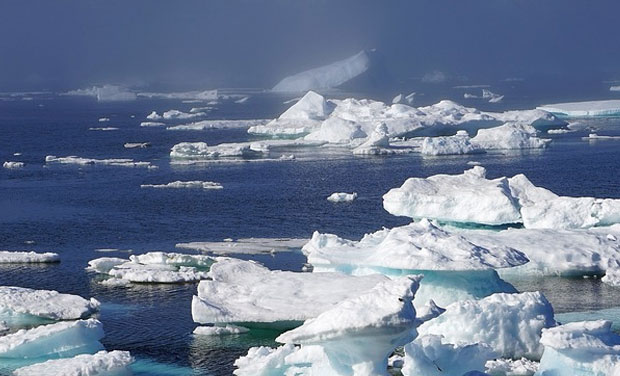
Well here we have it, Global Warming has officially swallowed an entire island…
Rising ocean levels, caused by global warming (which is causing glaciers to melt), will soon make 70,000 people homeless, as—the first victims of global warming — an inhabited island near India has been completely covered with water.
Lohachara island is only the first island nation to drown. The Pacific island of Vanuatu has also been evacuated, and more are expected to drown soon, from the Maldives to the Marshall Islands. Large areas of continents will probably soon drown as well, with Bangladesh likely to be one of the first.
The obliteration of Lohachara island, in India’s part of the Sundarbans where the Ganges and the Brahmaputra rivers empty into the Bay of Bengal, marks the moment when one of the most apocalyptic predictions of environmentalists and climate scientists has started coming true.
According to Wikipedia:
The islet is one of a number of “vanishing islands” in India’s part of the delta: in the past two decades, four islands – Bedford (or Suparibhanga), Lohachara, South Talpatti Island (disputed island between Bangladesh and India), and Kabasgadi – have been permanently flooded. Of them, only Lohachara was an inhabited island where more than 6,000 people used to live. The loss of land has created thousands of displaced people in the area who were forced to move to the mainland.
In the Pacific atoll nation of Kiribati – vanished beneath the waves. The people of low-lying islands in Vanuatu, also in the Pacific, have been evacuated as a precaution, but the land still juts above the sea. The disappearance of Lohachara, once home to 10,000 people, is unprecedented.
Until now the Carteret Islands off Papua New Guinea were expected to be the first populated ones to disappear, in about eight years’ time, but Lohachara has beaten them to the dubious distinction.
Refugees from the vanished Lohachara island and the disappearing Ghoramara island have fled to Sagar, but this island has already lost 7,500 acres of land to the sea. In all, a dozen islands, home to 70,000 people, are in danger of being submerged by the rising seas.
Global Warming Reports:
First an article reports that China’s winter has been the warmest on record. Historically, the average temperature during winter is normally below freezing, but temperatures of 60 degrees Fahrenheit have hit the capital. This is nearly 30 degrees difference which set records highs dating back to 1840. Magnolia trees are being reported as already blossoming with the warming weather conditions that aren’t normally felt until April and people are shedding off their clothes. China admits, their winters have been noticeably warmer since the 1980′s and acknowledges that global warming is likely the cause. China, of course, blames the West and the more highly developed countries.
Global Warming Snippet:
Retailer Diesel Makes Global Warming Ad Campaign – Watch Video Here
The year 2006 for China experienced some of the harshest weather conditions ranging from powerful typhoons and droughts that displaced millions of people over the course of the year. China’s rainfall was 90 percent less than usual and the rain that did fall was a 50% occurrence of acid rain in some parts of the country, (sulfur dioxide, a by product of burning coal.)
A major portion of all rainfall occuring in 487 major cities in China was acid rain. Coal burning plants supply 70% of China’s energy and a new plant was built every three days in 2003. These numbers are growing with China’s 1.3 billion growing population with higher demands for energy and a steady GDP rate of over 10%. China’s economy is booming with no signs of slowing down, and this means that people lower class citizens are moving up the economic ladder with more energy and consumer demands. With 300,000 people in China facing drought issues, and no sign of rain to alleviate the drought, China has some important decisions to make to manage the climate change crisis happening right before them.-People’s Daily.
50,000 Scientists Head To The Poles To Assess Climate Change
Everything from submarines, icebreakers, and satellites were used to study the exact nature of how climate change is affecting the poles. Also, solar radiation was researched as well as marine life. All these projects lead to a complete and coordinated effort for the scientific community. This is the most extensive research project that has been conducted in 50 years and the information obtained from it was invaluable.
What they found was that the great Antarctic Continent was melting ice from beneath…called basal ice melt. They found that basal melt was responsible for 55% percent of the continent ice shelf loss.
Eric Rignot, the lead author of the study was quoted:
“This has profound implications for our understanding of interactions between Antarctica and climate change. It basically puts the Southern Ocean up front as the most significant control on the evolution of the polar ice sheet.”





Leave a Comment